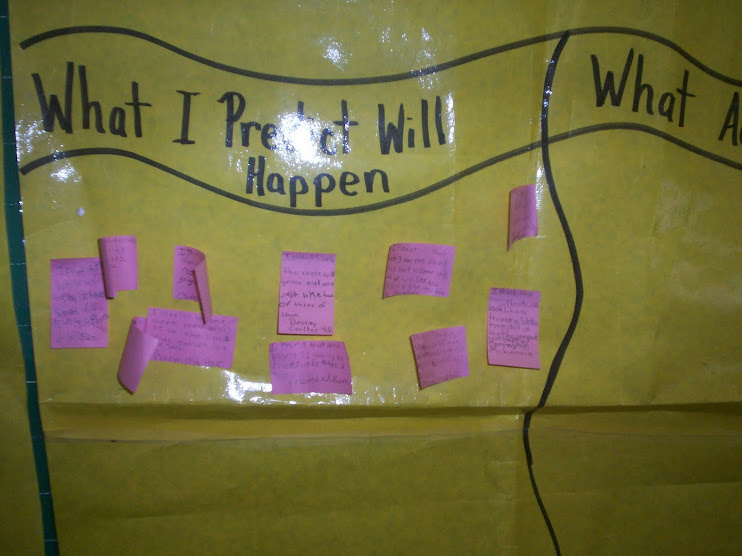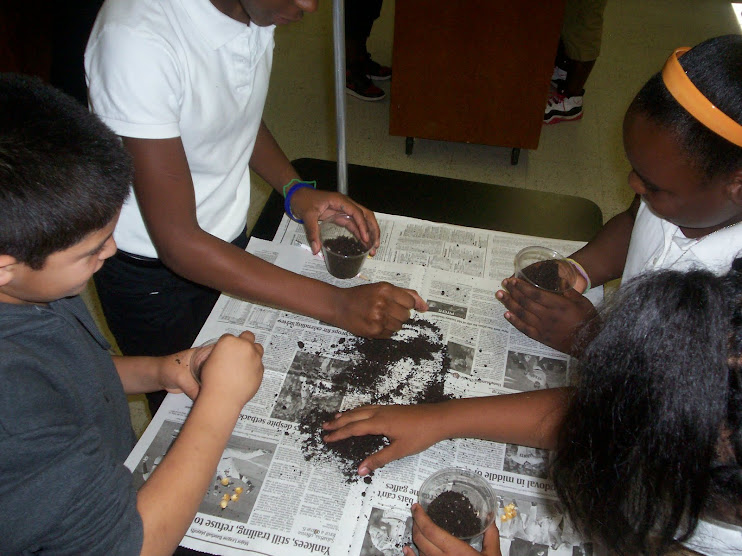Biomes Of the World
Terrestrial Maurine Freshwater
Temperate Forest
Tropical Forest
Boreal Forest
Hot & Dry Desert
Costal Desert
Cold Desert
Savanna
Alpine Tundra
Arctic Tundra Ocean
Coral Reefs
Estuaries Ponds & Lakes
Streams & Rivers
Wetlands
Wednesday, December 1, 2010
Plant Growth Project's Conclusion & Cost
Conclusion
We found that in order for seeds to germinate and grow successfully through a plant cycle, it is critical for them to be in stable, environmentally friendly conditions were there is enough food, water, and sunlight.
Project Summary
Difficulty 4
Time Required 6 Weeks
Material Availability Easily Acquired
Cost $20-40
Safety Minor injury possible. Adult supervision recommended during lab.
We found that in order for seeds to germinate and grow successfully through a plant cycle, it is critical for them to be in stable, environmentally friendly conditions were there is enough food, water, and sunlight.
Project Summary
Difficulty 4
Time Required 6 Weeks
Material Availability Easily Acquired
Cost $20-40
Safety Minor injury possible. Adult supervision recommended during lab.
Plant Growth Project Variables
Control- Project will be conducted in a 4th grade classroom setting, and facilitated weekly by the Researcher of the Science Project, and Project Monitor. Control group participants will do a Read-Aloud of One Bean written by Anne Rockwell, and Illustrated by Megan Halsey. Students will use the Science Lab at the facility to pot their own seedling, and create a chart to mark bi-weekly changes.
Independent Variable- Researcher will conduct similar experiment in a home environment of Ivy sprouts planted in Soil, Sand, Pond Water, and Gravel. Researcher Wondering: Will the plants germinate or sprout differently under incandescent lights which give off heat; and, will the environment yield varying results since under controlled and consistent conditions.
Dependent Variable- Researcher will have school project conducted under the guidance of a Facilitator, in a classroom setting where there are fluorescent lights that are cooler than incandescent lights. In this environment, Researcher noticed that the construction work being done in and around the building might affect the outcome of the experiment. Conditions of the classroom varied from very cool to dry heat.
Independent Variable- Researcher will conduct similar experiment in a home environment of Ivy sprouts planted in Soil, Sand, Pond Water, and Gravel. Researcher Wondering: Will the plants germinate or sprout differently under incandescent lights which give off heat; and, will the environment yield varying results since under controlled and consistent conditions.
Dependent Variable- Researcher will have school project conducted under the guidance of a Facilitator, in a classroom setting where there are fluorescent lights that are cooler than incandescent lights. In this environment, Researcher noticed that the construction work being done in and around the building might affect the outcome of the experiment. Conditions of the classroom varied from very cool to dry heat.
Plant Growth Hypothesis, Problem, & Materials
Hypothesis
Can a plant germinate in different biomes, climates, or conditions?
Problem
During the experiment, the control group found that there has to be consistency in any environment in order for a plant to germinate and take root, or, it will die.
Materials
Journal
Plastic Cups
1 liter bottle of water
Scissors
Ruler
Bag of River Rock/Gravel
Bag of potting soil/sand
1 liter of pond water
Packets of seeds, beans, yellow corn, peas, ect…
Measuring cup (1-cup)
Zip lock storage bags
Permanent marker
Story: One Bean by Anne Rockwell
Can a plant germinate in different biomes, climates, or conditions?
Problem
During the experiment, the control group found that there has to be consistency in any environment in order for a plant to germinate and take root, or, it will die.
Materials
Journal
Plastic Cups
1 liter bottle of water
Scissors
Ruler
Bag of River Rock/Gravel
Bag of potting soil/sand
1 liter of pond water
Packets of seeds, beans, yellow corn, peas, ect…
Measuring cup (1-cup)
Zip lock storage bags
Permanent marker
Story: One Bean by Anne Rockwell
Dallas ISD 7th Grader's Final Report for Plant Growth
Abstract
Have you ever wondered why certain plants grow in one area, but not in others? This could probably be influenced by the climate, temperature, and availability of water. Fluctuation in temperature and lack of water tend to go hand in hand along with the availability of sun and altitude. In this science project, you will learn about four different biomes, soil, sand, gravel, and pond water; and how climate conditions can affect plant growth.
Objective
This project seeks to investigate the effects of different biomes on plant growth.
Introduction
Let’s take a look at the meaning of biome: a biome is the habitat in which the organism lives. Its climate and region dictates how it germinates based on temperature, availability of water, food, and sunlight. Based upon were a plant grows, the vegetation changes from the south or north. Example, here are a few places where botanist have studied varying biomes of plant life:
1. Rain forest
2. Temperate forest
3. Taiga (boreal forest); and
4. Tundra
In looking at the vegetation world map, we have found that the Desert is the largest biome, and is not good for plant growth. This is probably why the seeds planted in gravel of this science fair project did not succeed. In relation to soil growth, it can be the most productive, or the least. Where nutrients are plenty, plant cycle is strong; but, where it is week, such as a home setting, fertility declines.
For more information regarding this, and other classroom projects on plant growth, please visit www.pbskids.org/zoom/activities/sci/biomeinabaggie.html
Credits
Hort & Crop Science Home
Michelle Maranowski, PhD, Science Buddies
Have you ever wondered why certain plants grow in one area, but not in others? This could probably be influenced by the climate, temperature, and availability of water. Fluctuation in temperature and lack of water tend to go hand in hand along with the availability of sun and altitude. In this science project, you will learn about four different biomes, soil, sand, gravel, and pond water; and how climate conditions can affect plant growth.
Objective
This project seeks to investigate the effects of different biomes on plant growth.
Introduction
Let’s take a look at the meaning of biome: a biome is the habitat in which the organism lives. Its climate and region dictates how it germinates based on temperature, availability of water, food, and sunlight. Based upon were a plant grows, the vegetation changes from the south or north. Example, here are a few places where botanist have studied varying biomes of plant life:
1. Rain forest
2. Temperate forest
3. Taiga (boreal forest); and
4. Tundra
In looking at the vegetation world map, we have found that the Desert is the largest biome, and is not good for plant growth. This is probably why the seeds planted in gravel of this science fair project did not succeed. In relation to soil growth, it can be the most productive, or the least. Where nutrients are plenty, plant cycle is strong; but, where it is week, such as a home setting, fertility declines.
For more information regarding this, and other classroom projects on plant growth, please visit www.pbskids.org/zoom/activities/sci/biomeinabaggie.html
Credits
Hort & Crop Science Home
Michelle Maranowski, PhD, Science Buddies
Tuesday, September 14, 2010
Sanders Enterprises hosts 20% V.I.P. Savings Pass For Educators!
Sanders Enterprises wants your business! Wouldn't it be nice if all our favorite places to shop offered us back a percentage of what we spent upon leaving the store just as a way of saying, " Thanks for shopping with us today! Here's a check for 20% of what you've spent." Thanks to local upscale retail store, Macy's, in S.E. Texas, Educators and other consumers can enjoy the value of saving a dollar and making it stretch. Shoppers who have obtained the coveted shopping pass will enjoy 20% extra savings on designer items that almost NEVER go on sale. This crafty sales attraction has spurred Sanders Enterprises the opportunity of having consumers gain the benefit of recycling dollars, and putting the savings where it belongs...back in the customer's pockets. This Independent Business Owner wants you to remember one thing if nothing else...Why shop for savings temporaily when you can do it for yourself and from yourself year-round? Become and Member or IBO and SAVE SAVE SAVE at http://www.amwayglobal.com/TessSanders IBO #5423585.
Tuesday, August 17, 2010
30% Educator Discount!
Experience the value of saving a dollar and making it stretch. Take advantage of discounts up to 30% for your home, family, office, and classroom. Register by Aug. 30, 2010, contact me, and I will give you about 30% off of your entire purchase until December 2011. Shop name brand goods and services such as Best Buy, Office Depot, Sears, Franklin Covey, PetCo, Budget Rental Car, Choice Hotels, and much more.
To register online, you must use your school's name where you are currently employed as a full-time educator. Register at www.quixtar.com, IBO number 5423585. You may also register for membership at www.tsanders14.qhealthbeauty.com or www.tsanders14.qbeautyzone.com.
To register online, you must use your school's name where you are currently employed as a full-time educator. Register at www.quixtar.com, IBO number 5423585. You may also register for membership at www.tsanders14.qhealthbeauty.com or www.tsanders14.qbeautyzone.com.
Subscribe to:
Posts (Atom)






























